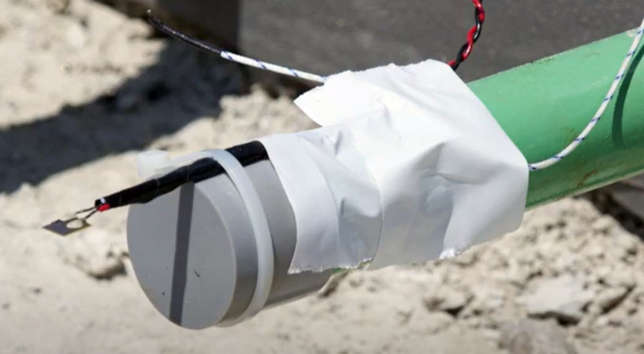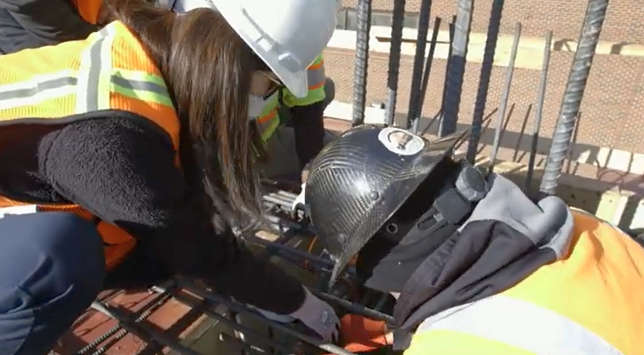Purdue Concrete Sensors Could Speed Construction Onsite
- By Dian Schaffhauser
- 02/11/21
Engineering
researchers at Purdue
University have come up with sensors that can
determine concrete strength onsite in real-time, and they're testing
it right on campus. The hope is that the technology will help
builders speed up their construction timelines safely.
According to a
campus
article, concrete mix designs are tested offsite for
"compressive strength" before their use in a construction
project. Once the testing is done and the mixes vetted for use, they
can't be changed without additional testing. The new sensors would
eliminate the need for offsite testing by enabling contractors to
verify the concrete's maturity right on the jobsite.

Purdue University
engineers have developed sensors that can instantly measure concrete strength onsite, speeding up a construction timeline. Purdue
University
The researchers are
working with F.A.
Wilhelm Construction Co. to test and compare the
technology with traditional commercial sensors installed into a floor
of what will be Purdue's five-story Engineering
and Polytechnic Gateway Complex. The construction site
is managed by Shiel
Sexton Co. Inc. and the building is expected to be
completed in fall 2022.
"Our sensors
could help make better data-driven decisions to determine the
construction schedule and improve the quality of concrete
construction," said civil engineering Professor Luna Lu.

Civil engineering professor Luna Lu helps to place a sensor that her lab developed into the third floor of what will be a Purdue building
complex. Source: Purdue
University
Lu and her research
team also are testing the sensors in highways
across Indiana as part of an effort to better
determine when concrete is ready to take on heavy truck traffic.
"We're trying
to work with contractors to find out how much saving we can do for
them in terms of time, cost and the number of people needed at a
site, which reduces risk and improves construction safety," said
Lu. "That starts with industry collaborations to evaluate how
well the sensors work."
Sensors aren't a new
addition in testing concrete strength and maturity. General
contractors have used them over the last decade. But before the
concrete is poured, the mixes have to be tested for strength based on
varying temperatures and the results graphed. That graph is used to
match up temperature measurements from sensors in the field. Strength
values on the graph, called a "maturity curve," help site
managers estimate when the concrete is strong enough to continue
construction.
If unexpected
weather or some other impact calls for a change in the mix, the
testing process has to start over again.
The sensors
developed by Lu's lab would measure concrete strength directly from
the floor deck in real time, eliminating the need for generating a
maturity curve beforehand.
Lu's sensors remain
in the concrete and generate a measurement of strength by using
electricity to send an acoustic wave through the material. How
concrete responds to particular wave speeds indicates its strength
and stiffness at the microstructure level.
Plus, they're easier
to use, said Ryan Decker, Wilhelm's corporate quality assurance
manager. "These new sensors are more of a ‘plug and play,' he
noted. "We could make judgment calls on the fly."
Twelve of Lu's
sensors have been installed into various sections of the Gateway
Complex's third floor so that the teams can best understand how well
they work compared with commercial sensors in use on the site.
Now, Lu's lab is
developing a system to let contractors receive the concrete's
strength information remotely.
The sensor
technology has a patent filed through the Purdue
Research foundation Office of Technology Commercialization.
A video about the
sensor testing is available on YouTube.
About the Author
Dian Schaffhauser is a former senior contributing editor for 1105 Media's education publications THE Journal, Campus Technology and Spaces4Learning.